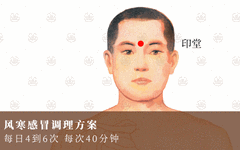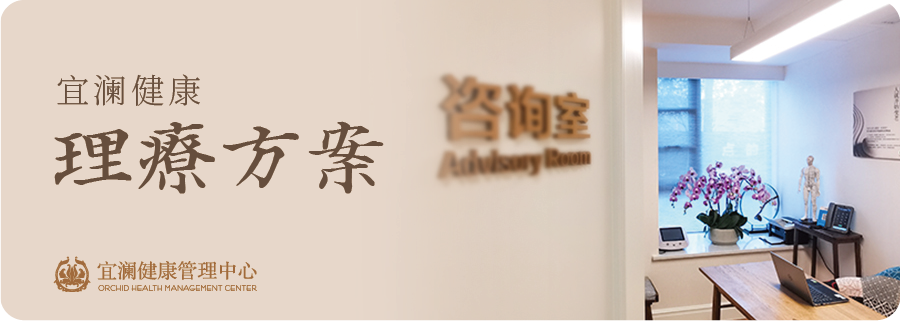
The Wind-Cold Common Cold is a common external pathogenic disease caused by the invasion of wind-cold evil qi, characterized clinically by nasal congestion, runny nose, sneezing, cough, headache, chills, fever, and general malaise.
Etiology and Pathogenesis
In Traditional Chinese Medicine (TCM), Wind-Cold Common Cold is also referred to as “Shang Feng” (伤风), which means to be affected by wind. The term “冒” (mào) originally means “hat,” indicating that one should protect the head from wind and cold. TCM advises against exposing oneself to wind and snow, as this can easily allow these evil qi to invade the body.
When wind-cold invades the skin and muscles, it not only damages the collaterals, meridians, and muscles but also primarily affects the lungs, as the lungs are associated with the skin. Therefore, the Suwen (素问) states: “The skin and hair are the exterior of the lungs; when the skin and hair first receive the evil qi, the evil qi enters through this connection.” Thus, the combination of wind and cold evils along with insufficient righteous qi are important factors leading to the Wind-Cold Common Cold, with the disease located in the upper jiao (肺与皮毛) and the pathogenesis being the invasion of external evil into the lungs, causing the lungs to lose their ability to disperse and descend.
The pathway of cold evil causing disease is through the lung system and muscle surface. First, when cold evil invades, the skin pores close, preventing heat from dispersing, leading to symptoms such as fever, chills, and abnormal sweating. Second, when cold evil attacks the lungs, the lung qi cannot normally disperse and descend, resulting in nasal congestion and cough. If the disease persists or recurs, it can damage the righteous qi, or in the case of the elderly or weak individuals, insufficient righteous qi and unstable defensive qi make them more susceptible to cold evil, leading to recurrent Wind-Cold Common Cold with a prolonged course.
Clinical Manifestations
1. Typical Symptoms
Nasal congestion, sneezing, runny nose, throat itch, throat pain, cough, headache, heavy limbs, aversion to wind or cold, or fever.
2. Early Symptoms
Aversion to wind, aversion to cold, nasal congestion, and clear nasal discharge.
3. Mid-Stage Symptoms
Severe aversion to cold, mild fever, nasal congestion with runny nose, accompanied by throat itch, cough, headache, and heavy limbs.
4. Late-Stage Symptoms
If the condition is not controlled in a timely manner, as the disease progresses, symptoms such as poor appetite, fatigue, irritability, and insomnia may appear.
5. Other Symptoms
The Wind-Cold Common Cold may be accompanied by other six excess pathogenic factors or seasonal epidemic toxins, leading to defensive qi being constrained, heat toxins obstructing the lungs, and disturbing the heart and stomach. Mild cases may present with cough, wheezing, heavy limbs, irritability, fatigue, constipation, or abdominal pain, while severe cases may lead to confusion and delirium.
Targeted Treatment Plan
Treatment Strategy: Disperse Wind, Scatter Cold, Release the Exterior, and Promote Lung Function
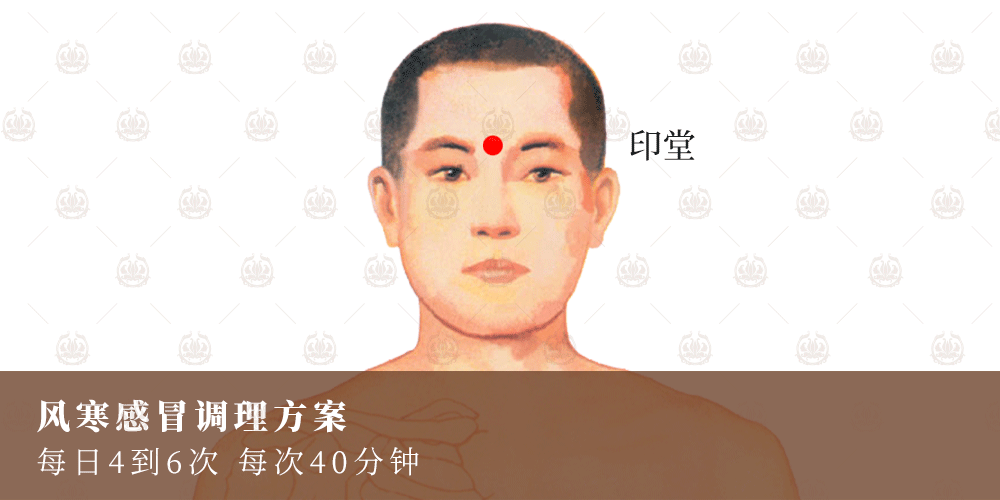
The Yintang (印堂) point is located on the forehead, at the intersection of the line connecting the two eyebrows and the midline of the forehead.
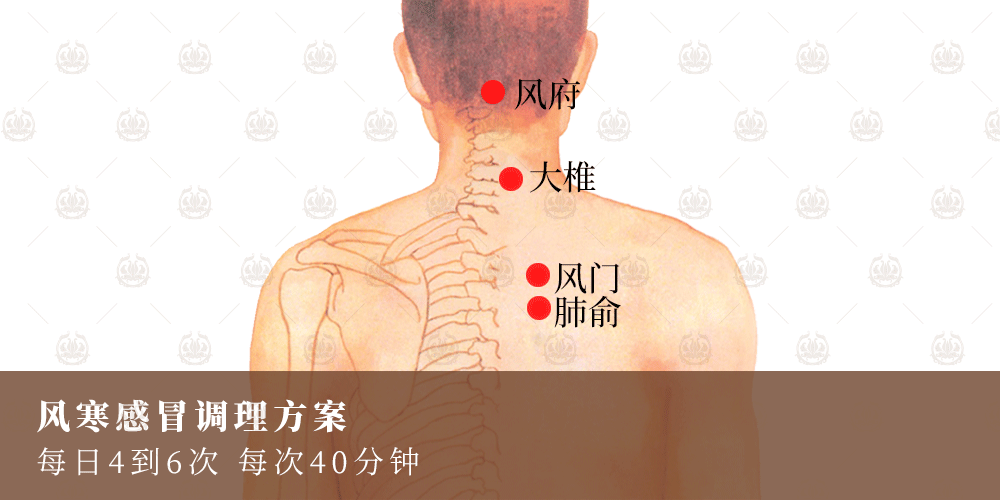
The Fengfu (风府) point is located at the back of the neck, in the midline 1 inch above the posterior hairline, in the depression between the two trapezius muscles.
The Dazhui (大椎) point is located at the lower end of the neck, in the depression below the spinous process of the seventh cervical vertebra.
The Pulmonary Shu (肺俞) point is located on the back, at the level of the spinous process of the third thoracic vertebra, 1.5 inches lateral to it.
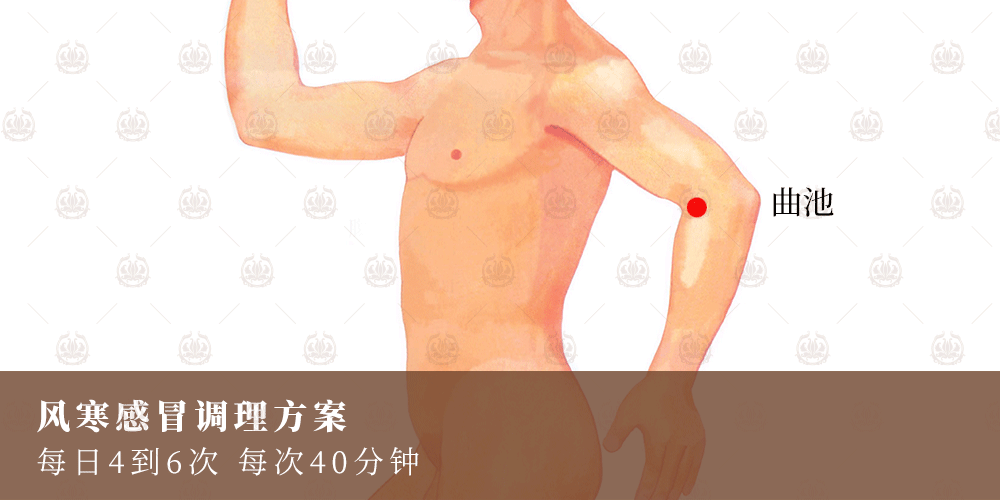
The Quchi (曲池) point is located at the lateral end of the elbow crease, when the elbow is flexed, at the midpoint between the Heze (尺泽) point and the lateral epicondyle of the humerus.
Precautions
1. Be cautious with daily activities, adapting to temperature changes, especially in winter and spring, and pay attention to warmth. In summer, avoid excessive exposure to cold.
2. Engage in exercise to strengthen the body and resist external pathogens. Those who are prone to colds should minimize visits to crowded public places during cold seasons to prevent cross-infection. Indoor vinegar steaming can be used for air disinfection to prevent infection.
3. During treatment, ensure adequate rest and maintain a light diet. For those with severe symptoms, the elderly, infants, or those with weak constitutions, close observation is necessary to monitor changes in condition, such as high fever, wind invasion, or complications with other diseases.
The above article is an original work by Yilan. Please cite the source when reproducing.
Layout by|Yilan Written by|Huang Yan Edited by|Xiao Chengwu



